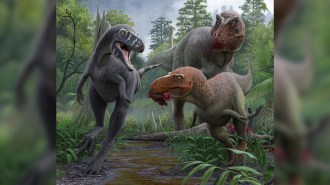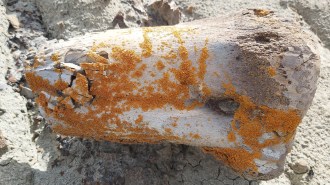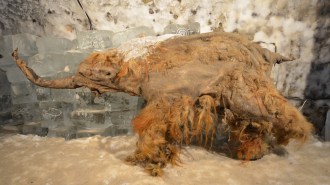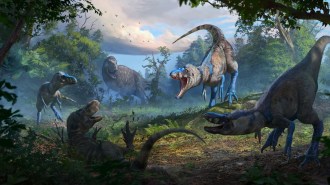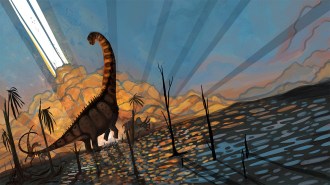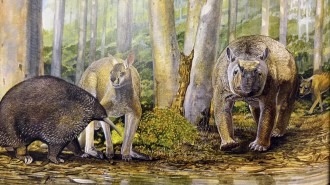Trackway site shows dinosaur on the go
From Norman, Okla., at a meeting of the Society of Vertebrate Paleontology
Scientists say that a bathtub-shape depression found at one of North America’s most significant sites of dinosaur tracks is the first recognized evidence of urination in dinosaurs.
The Purgatoire Tracksite south of La Junta, Colo., boasts more than 1,300 fossil footprints that form more than 100 individual trackways. Large, four-legged brontosaurs and swift, bipedal theropods blazed those trails across the gently sloping shores of a freshwater lake about 150 million years ago, says Katherine McCarville of the South Dakota School of Mines and Technology in Rapid City.
At one spot at the site, there’s a 3-meter-long, 1.5-m-wide, and 25-to-30-centimeter-deep depression. The material filling the smooth-walled hollow is the same as that in the surrounding sediment, but the mineral grains and chunks of clay filling the depression gradually decrease in size from the bottom of the hole toward the surface. Such sorting takes place when grains are suspended in moving water or other thin fluids, McCarville notes. Field experiments in which she and her colleague Gale A. Bishop sent streams of water from large, elevated containers onto layered sand produced similar scours with sorted sand grains.
Because the ancient lakeshore was nearly flat, the researchers contend that dinosaurs were the only possible source of such concentrated fluid streams. The size of the basin at the Colorado track site suggests that one of the brontosaurs that strode across the area was the culprit, says McCarville. She estimates that the behemoth’s bladder held about 1,300 liters. Because that’s almost the entire body volume of one of the theropods that made tracks there, these small carnivores probably have an alibi.
****************
If you have a comment on this article that you would like considered for publication in Science News, please send it to editors@sciencenews.org.

